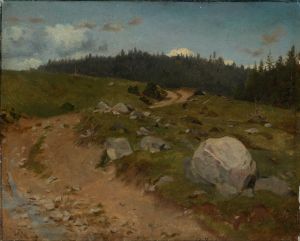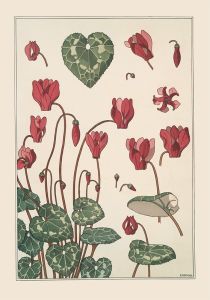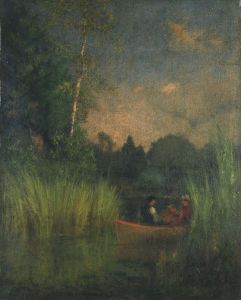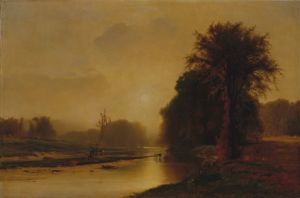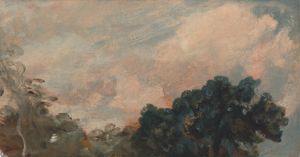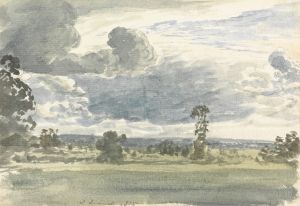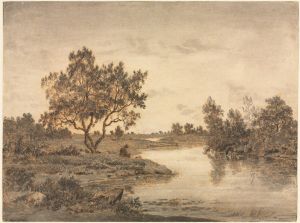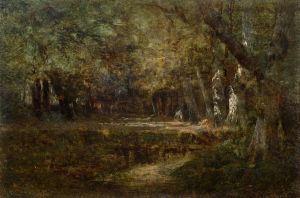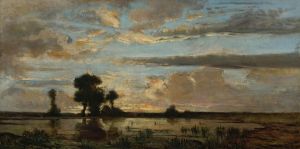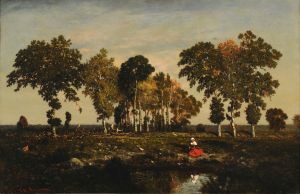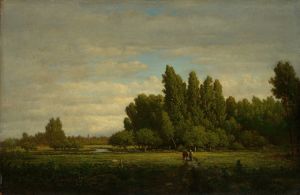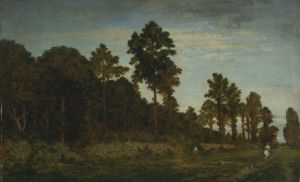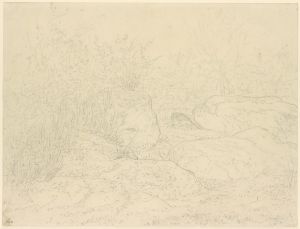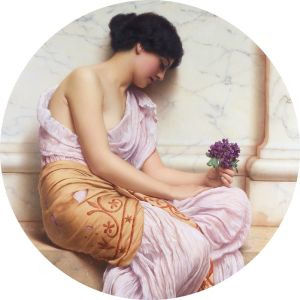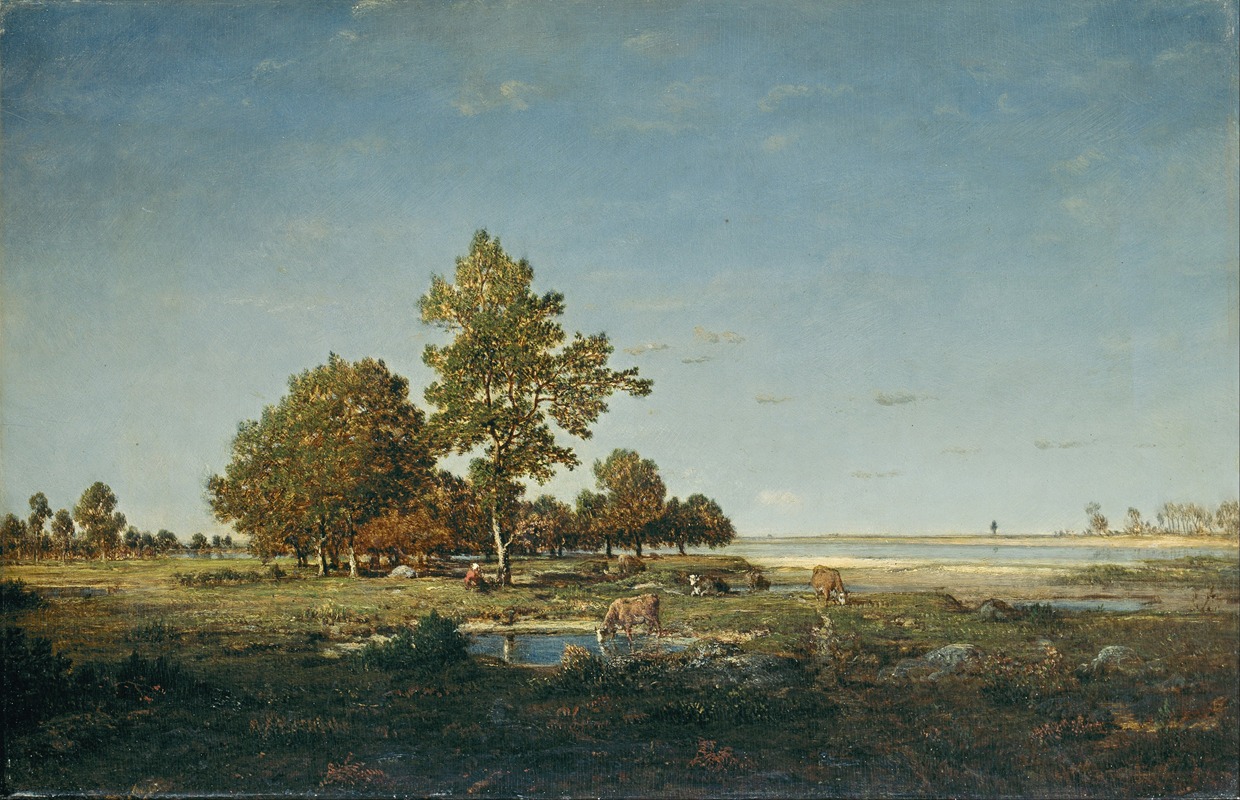
Landscape with a clump of trees
A hand-painted replica of Théodore Rousseau’s masterpiece Landscape with a clump of trees, meticulously crafted by professional artists to capture the true essence of the original. Each piece is created with museum-quality canvas and rare mineral pigments, carefully painted by experienced artists with delicate brushstrokes and rich, layered colors to perfectly recreate the texture of the original artwork. Unlike machine-printed reproductions, this hand-painted version brings the painting to life, infused with the artist’s emotions and skill in every stroke. Whether for personal collection or home decoration, it instantly elevates the artistic atmosphere of any space.
Théodore Rousseau's "Landscape with a Clump of Trees" is a notable example of 19th-century French landscape painting, reflecting the artist's deep connection with nature and his role as a leading figure in the Barbizon School. Rousseau, born in Paris in 1812, was a pivotal figure in the development of naturalistic landscape painting in France. His work is characterized by a meticulous attention to detail and a profound appreciation for the natural world, which is evident in this particular painting.
"Landscape with a Clump of Trees" exemplifies Rousseau's dedication to capturing the essence of the French countryside. The painting likely depicts a scene from the Forest of Fontainebleau, a favored location for Rousseau and other Barbizon painters. This forest, located southeast of Paris, provided a rich tapestry of natural beauty that inspired many artists of the time. Rousseau's choice of subject matter reflects his commitment to portraying the landscape as it appeared, without romanticizing or idealizing it.
The painting showcases Rousseau's skillful use of light and shadow to create depth and dimension. His brushwork is both precise and expressive, capturing the textures of the trees and the play of light across the landscape. The composition is balanced, with the clump of trees serving as a focal point that draws the viewer's eye into the scene. Rousseau's palette is typically earthy, with rich greens and browns that convey the lushness of the natural environment.
Rousseau was known for his innovative approach to landscape painting, which often involved working en plein air, or painting outdoors, to capture the changing effects of light and atmosphere. This method allowed him to observe and depict the subtleties of nature with great fidelity. His dedication to painting directly from nature was a departure from the academic tradition of the time, which often involved creating landscapes in the studio based on sketches and imagination.
The Barbizon School, of which Rousseau was a leading member, was instrumental in shifting the focus of French landscape painting from the idealized and historical to the realistic and contemporary. This movement laid the groundwork for later developments in art, including Impressionism. Rousseau's work, including "Landscape with a Clump of Trees," played a significant role in this transition by emphasizing the beauty and complexity of the natural world as it is.
Throughout his career, Rousseau faced challenges, including initial rejection by the Paris Salon, the official art exhibition of the Académie des Beaux-Arts. However, his persistence and dedication to his craft eventually earned him recognition and respect. By the time of his death in 1867, Rousseau had established himself as a master of landscape painting, influencing a generation of artists who followed.
"Landscape with a Clump of Trees" remains an important work within Rousseau's oeuvre, highlighting his ability to convey the serene and timeless quality of nature. It serves as a testament to his skill as a painter and his enduring legacy in the history of art. The painting continues to be appreciated for its technical excellence and its contribution to the evolution of landscape painting in the 19th century.





